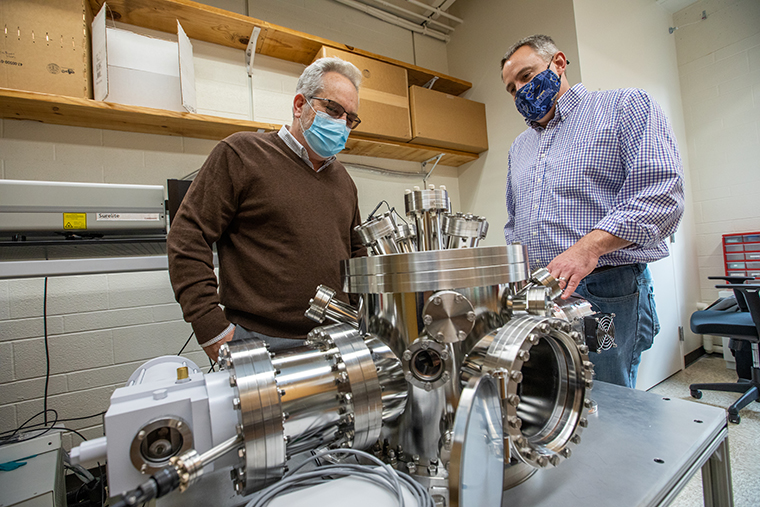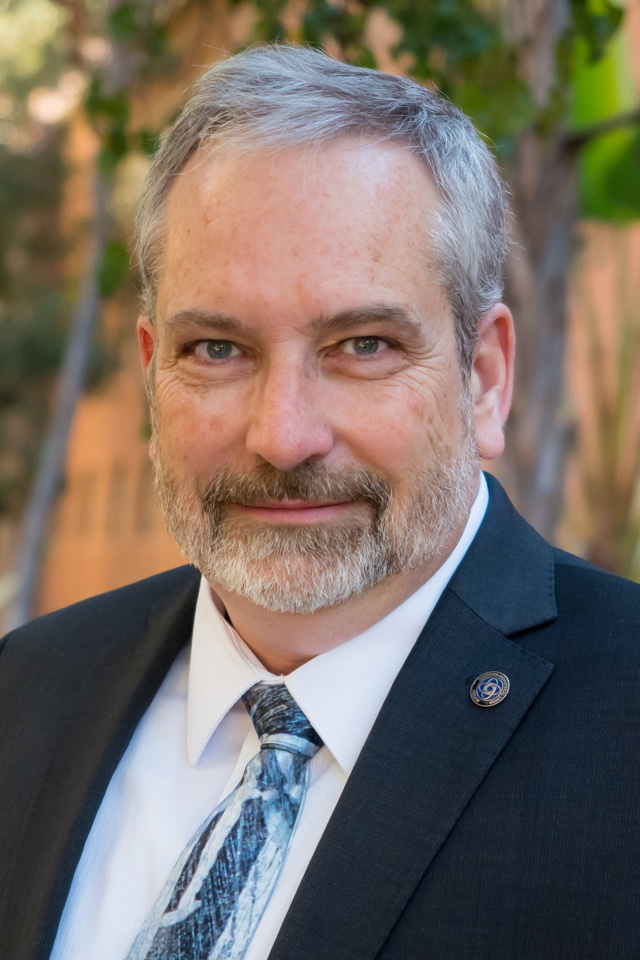
Much of what scientists now know about the composition of the early solar system is thanks to Kevin McKeegan, PhD '87, who, over nearly four decades of research, has analyzed everything that he could get his hands on, from microscopic cometary dust, to asteroids, lunar rocks, and even samples of the sun.
But before there was McKeegan, a world-renowned cosmochemist and distinguished professor at the University of California, Los Angeles, there was McKeegan, a kid from New York City born in 1958 - "exactly as old as NASA!" he says - who missed the biggest space event of his generation's childhood because his parents had decided on a cross country family trip that summer in 1969.

"I still don't know how they pulled this off because we camped all the way from New York to California - and back - with five kids in a Ford Econoline van," he says. "We were staying in a campground in rural Nebraska the night of the moon landing, and there were literally no TVs around. I can't be mad at them, but you know, Mom and Dad, why did you not think about this?"
Fast forward about 17 years, and McKeegan is a grad student in the Department of Physics in Arts & Sciences at Washington University in St. Louis, studying under Robert M. Walker, inaugural Director of the McDonnell Center for the Space Sciences and one the first scientists to study moon rocks brought back from the Apollo missions. Walker was also keenly interested in dust particles that were starting to be collected in the upper atmosphere by University of Washington astronomy professor Don Brownlee.
Walker's hunch (which turned out to be correct) was that some of these "Brownlee particles" were derived from comets and could therefore be some of the most primitive material surviving from the early solar system. At the time of McKeegan's arrival in St. Louis, Walker also was working with Mac Center research fellow Ernst Zinner to develop an instrument called the ion probe as a way of measuring isotopes in the dust particles. But first they had to figure out the basics, so Walker gave his new grad student an assignment.
About Kevin McKeegan, PhD '87
Studied at WashU: Physics, under the acclaimed Robert M. Walker and Ernest M. Zimmer.
Research areas: Geochemistry and cosmochemistry; planetary science
Academic articles published, per Google scholar: 506
Most cited article, per Google scholar: "Evidence for life on Earth before 3,800 million years ago," cited 1,589 times since 1996.
On how he ended up taking the path he did: "I wasn't maybe as directed as kids are today. My own kids asked, 'How did you do this?' Sometimes, a series of semi-logical decisions eventually coalesce into something. It could have gone a different way. I just started doing what was interesting to me at the time."
"The first project he gave me was to measure the density of individual interplanetary dust particles - to try to confirm a link to comets, which were thought to be low density" McKeegan says. "These were tiny, microscopic dust particles. How in the world do you measure that?" Thankfully, McKeegan was at WashU, where he had heard about work out of the School of Medicine by biochemist Oliver Lowry, who had developed a pioneering method to measure the amount of protein in a solution.
"Lowry had built a microbalance device to weigh individual cells," McKeegan says. "I got in touch with him and said we wanted to weigh these little dust particles that are collected in the stratosphere that were only about 10 microns across and weighed perhaps a billionth of a gram. And he said, 'Well come on over and try it.' So I did, and it worked."
A collaboration in the stars? Sounds simple, but there was a lot of work to do. Eventually McKeegan, working with Mac Center postdoctoral scholar Phil Fraundorf (PhD, '80), was able to determine that the dust indeed had very low density. McKeegan then developed methods to analyze the grains in the ion probe, becoming the first in a long line of WashU graduate students to write a doctoral thesis with that instrument.
Through this initial effort, McKeegan's career in the cosmos was formed. Last November, his WashU journey came full circle when he delivered the Robert M. Walker Distinguished Lecture for the McDonnell Center for Space Sciences.
A 'phenomenally important' measurement
Building on the work of Walker and Zinner, McKeegan went on to build a specialized ion probe at UCLA to measure atoms of the solar wind brought down to Earth by NASA's Genesis mission. "McKeegan and his team made what is considered by many to be the most important single measurement in all of cosmochemistry: the oxygen isotopic composition of the sun," says Ryan Ogliore, assistant professor of physics. "I've used that measurement in many of the papers I've written in the last several years," he says, noting that McKeegan's work is "phenomenally important."
"Scientists have leveraged what we learned from the Genesis results and other extraterrestrial materials," Ogliore says, "as well as the new tools that have been developed in the last 40 years to understand in detail what happened in the first few million years of the solar system's history."
It's quite possible we might find life somewhere else, and this will be a game-changer."
Kevin McKeegan
It's research, McKeegan says, that he never takes for granted, especially realizing that he and his team have handled cosmic material that's older than the Earth's four-and-a-half billion years. Reflecting on some more recent research on lunar rocks, "there's a sense of responsibility you have for sure," he says, knowing the cost it took in both dollars and lives to get to this point, "but there's also a sense of awe."
Now that the dust, if you will, is beginning to settle on a remarkable career, has studying the tiniest particles of space taught him anything about Earth?
"It's a good question, and it's interesting to think of how far we've come and where we're likely to go," he says. "When I was a student, we knew of nine planets, and then we went down to eight. And now we know about thousands of planets. And one thing you can be sure of is that, sometime, probably not too far in the future, we will know of other Earth-like planets around sun-like stars.
"It's quite possible we might find life somewhere else, and this will be a game-changer," he says.
A pursuit, he says, that may well be the labor of younger researchers, and that's quite all right by the scientist as old as NASA. "Others are continuing this quest, and that makes you feel connected," he says, "to the past generation and the next generation."






